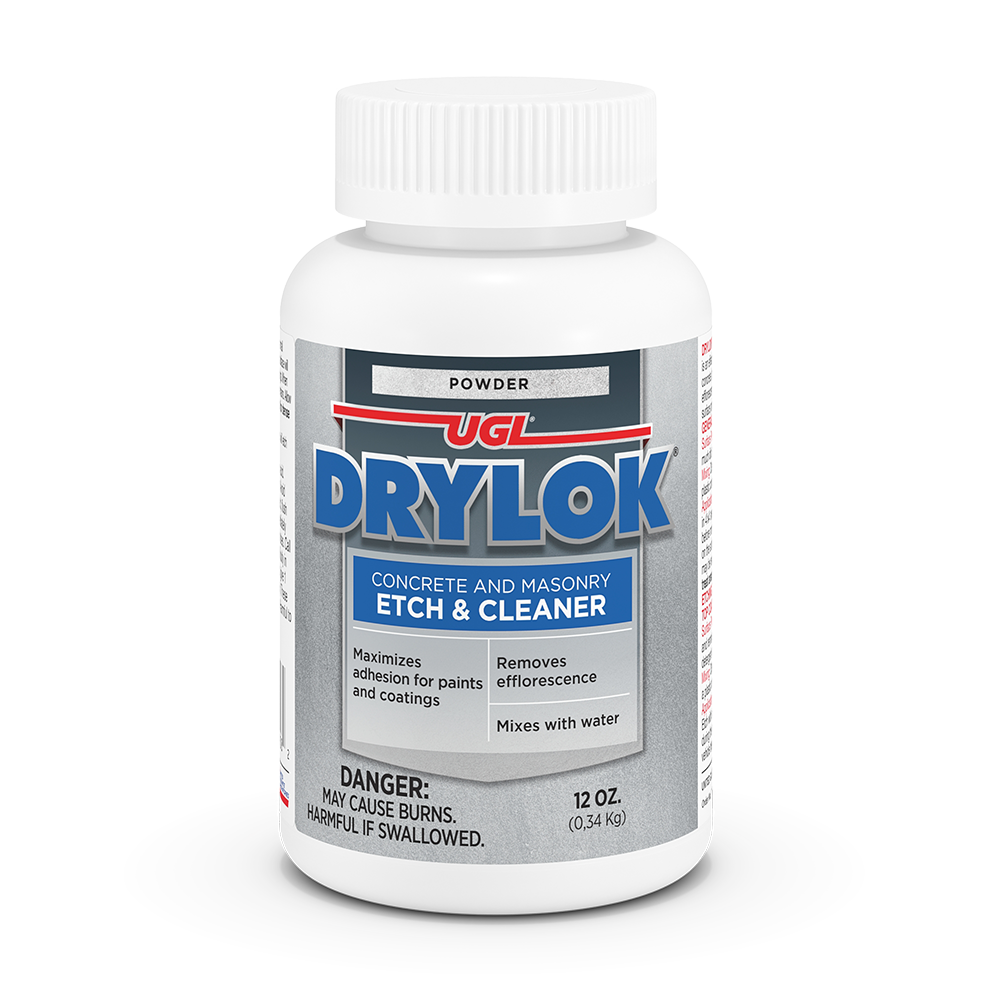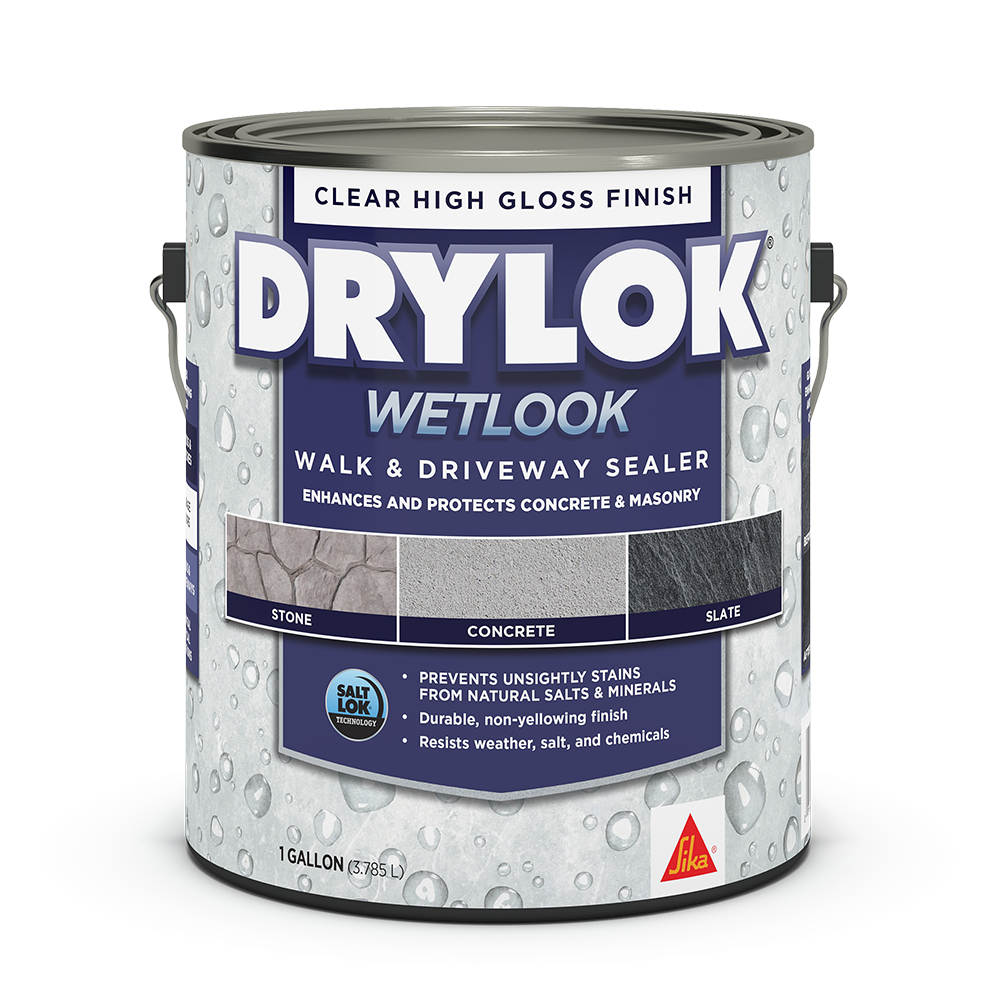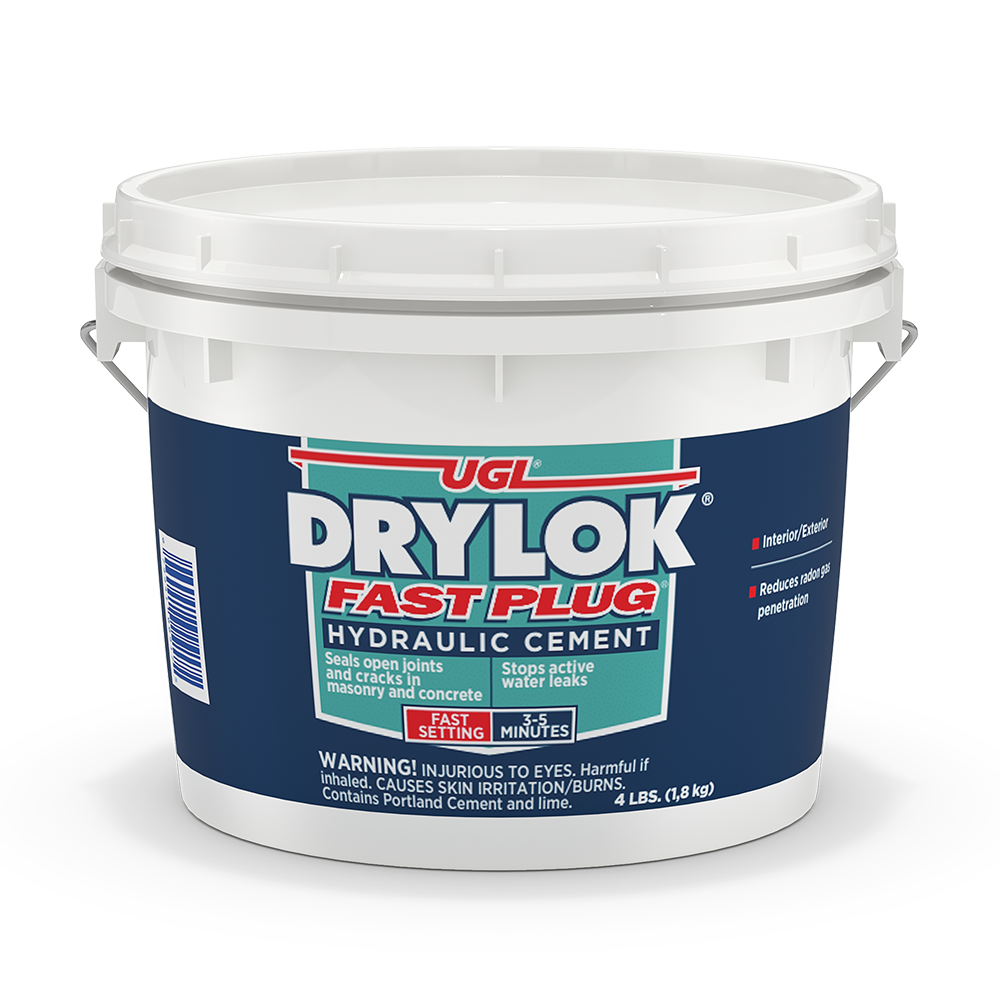Basement Problem?
We Can Help.
Identify common basement problems and discover DRYLOK® solutions.
Mineral Staining
Click to learn more ...
Mineral Staining


Naturally occurring minerals can cause white, orange, or brown stains on the concrete or masonry surface. Efflorescence is a white, powdery, crystal-like deposit that must be removed for waterproofing to be effective. Try these solutions to remove and prevent efflorescence and other mineral stains:

DRYLOK® Etch

DRYLOK® WetLook Clear High Gloss Penetrating Sealer

DRYLOK® Protector Clear Low Sheen Penetrating Sealer

DRYLOK® Wet Wall Bonding Primer
Gap Between Wood and Concrete
Click to learn more ...
Gap Between Wood and Concrete


When bonding or closing the gap between two different materials, the bonding material must have some flexibility to allow for slight movement over time. Try these solutions:

Sikaflex® Construction Sealant
Structural Crack
Click to learn more ...
Structural Crack


If a crack is wider than ⅛” and deeper than ¼”, it is likely a structural crack. This is typically caused by buildings settling. It commonly appears at the corner of windows. In block or brick walls, this usually develops with a visible stair-step pattern. Note: Cracks wider than ¼” should be inspected by a professional as it may indicate a serious structural issue. Try these solutions for a structural crack:

Sikacryl® PowerSet Instant Concrete Repair
Active Leaks
Click to learn more ...
Active Leaks


Water leakage is a common occurrence when the temperature changes. Over time, water can weaken foundation walls or cause mortar joints to separate. If water is actively leaking from a crack, try these solutions:

DRYLOK® Fast Plug®
Surface Crack
Click to learn more ...
Surface Crack


Cracks that are ⅛” or smaller in width and less than ¼” are considered surface cracks. Note: Cracks wider than ¼” should be inspected by a professional as it may indicate a serious structural issue. Try these solutions for a surface crack:

DRYLOK® Masonry Crack Filler
Peeling Paint
Click to learn more ...
Peeling Paint


If a concrete or masonry surface is not waterproofed, reoccurring moisture and efflorescence can cause paint to crack, peel, or bubble. The first step is to remove loose paint with a wire brush. These products offer a variety of solutions:

DRYLOK® Wet Wall Bonding Primer

DRYLOK® Extreme Concrete & Masonry Waterproofer

DRYLOK® Original Concrete & Masonry Waterproofer

DRYLOK® Etch
Wet Wall or Floor That Won't Dry
Click to learn more ...
Wet Wall or Floor That Won't Dry


Water will gather underground despite waterproofing efforts, especially in areas with high water tables. Without proper preparation, DRYLOK® Waterproofer may fail to cure, leading to ongoing moisture issues. Try these solutions:

DRYLOK® Wet Wall Bonding Primer

DRYLOK® Etch
Crack in Floor & Wall Joint
Click to learn more ...
Crack in Floor & Wall Joint


It is common for a crack or gap to form where the floor and wall meet. Patching this area is crucial to preventing water entry. Try these solutions:

DRYLOK® Fast Plug®

DRYLOK® Masonry Crack Filler

DRYLOK® Pourable Masonry Crack Filler
Stained Floor
Click to learn more ...
Stained Floor


Concrete floors are porous and therefore susceptible to staining. These solutions can help remove, prevent, and cover stains to improve the look:

DRYLOK® Etch

DRYLOK® E1 Latex 1-Part Epoxy Concrete Floor Paint

DRYLOK® Latex Concrete Floor Paint

DRYLOK® Clear Sealers
Floor Cracking and Spalling
Click to learn more ...
Floor Cracking and Spalling


Concrete surfaces can develop cracks due to factors such as shrinkage, settlement, or thermal changes. Spalling, on the other hand, refers to the breakage or flaking of concrete surfaces, often triggered by moisture, freeze-thaw cycles, or chemical exposure.

Sikacryl® Ready-Mix Concrete Patch

Sikadur® Crack Fix
Bare Floors
Click to learn more ...
Bare Floors


Basement floors are susceptible to water intrusion from underground water and moisture that enters from under the floor. To prevent water intrusion from damaging the structure and causing mold and mildew growth, try these waterproofing solutions designed for horizontal surfaces:

DRYLOK® Floor & Wall Masonry Waterproofer
Bare Masonry Walls
Click to learn more ...
Bare Masonry Walls


Concrete and masonry basement walls are susceptible to underground water and moisture that enters from behind the wall, called hydrostatic pressure. To prevent water intrusion from damaging the structure and causing mold and mildew growth, try these waterproofing solutions:

DRYLOK® Extreme Concrete & Masonry Waterproofer

DRYLOK® Original Concrete & Masonry Waterproofer

DRYLOK® Floor & Wall Masonry Waterproofer